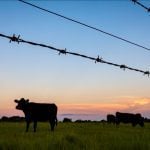
Beef Cattle

Florida farmers scramble to reach cattle after Hurricane Ian
Chicago | Reuters — Farmers in Florida rushed to reach their cattle on Thursday after trees downed by Hurricane Ian broke fences used to contain the animals and rain from the fierce storm flooded fields used for grazing. One of the mightiest storms to hit the U.S. mainland in recent years, Ian flooded communities on […] Read more

Itchy cattle? It may not be lice
Everything from nutritional deficiencies to mites can trigger scratching in cattle
A spike in complaints about its product’s ineffectiveness against itchy cattle drove Solvet, a Canadian veterinary pharmaceutical firm, to investigate the potential causes and to look for relief. “This has become a bigger problem than it used to be,” says Dr. Denis Nagel, a consulting veterinarian with the company, as well as with Alberta Veterinary […] Read more
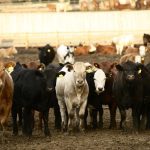
Good buyer demand pushes feeder cattle prices higher
The Markets with Deb McMillin, from the September 27, 2022 issue of Canadian Cattlemen
Fed cattle The Alberta fed cattle average set new highs each week as the market entered September. This contra-seasonal price pattern is a result of manageable summer supplies, solid demand and a softer Canadian dollar. It is encouraging to see beef demand and retail sales remain strong as consumers navigate inflation across North America. At […] Read more
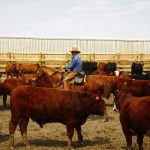
Eliminating guesswork with an accurate chute-side BRD test
Researchers are working on a simple test that would detect the presence of three common BRD-causing bacteria
Bovine respiratory disease (BRD) has long been the most serious respiratory challenge facing the beef industry, causing half of all cattle deaths from disease in North America. Its identification in individual animals almost always comes after the bacterial infection has established itself, causing an antibiotic response to play from behind. During a networking event in […] Read more
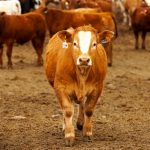
Klassen: Steady demand underpins feeder cattle complex
Compared to last week, Alberta yearling markets traded $2-$4 on either side of unchanged; however, 800-pound-plus cattle in Manitoba and Saskatchewan appeared to trade $4-$6 higher. Yearling prices across the Prairies are now relatively even with no freight discounts from major southern Alberta markets. Calf markets are becoming more defined with larger volumes on offer. […] Read more
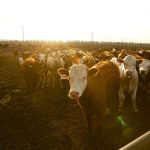
Klassen: Weaker Canadian dollar supports feeder market
Weather optimal for bringing in fresh replacements
Compared to last week, western Canadian yearlings traded steady to $2 higher on average while calves traded $2 higher to $4 lower. The calf market was hard to define due to limited numbers while larger supplies of yearlings were on offer in Manitoba this past week. Alberta packers were buying fed cattle on a dressed […] Read more

Saskatchewan family shares passion for cover cropping
The Gavelin family finds their cover crops perform well even under adverse conditions
Dark clouds roll in as a charter bus drives down gravel roads near McCord, Sask. Marla Gavelin, one of the people hosting the field day from the Prairie South Holistic Management group, speaks to the people in attendance. She compares the Gavelins’ farm to the Sahara Desert with a fond laugh, and the 70-plus people […] Read more

Show us the money, Part 2: Balancing beef carcass quality and yield
Only by sharing grading information can the industry signal market demand to cow-calf producers
In my previous column, our editor kept me on track when she titled it Show Us the Money. That was appropriate because I have noted that cattle producers do follow the money. That is to say, they absolutely do respond to market signals, but when no such signal exists, they can’t. In this column, I […] Read more

Introducing outside calves heightens crypto risk
Cryptosporidium parvum is a disease that’s easy to introduce and hard to manage in a beef herd
In the cold, wet pastures of a gruelling Manitoba spring near Oakville, Man., Garth McCormick needed a calf to put on one of his cows who had lost her calf, but didn’t have any he could use on his own farm. His hired man brought a calf from his own place to McCormick’s. Immediately, the […] Read more
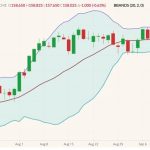
Klassen: April live cattle futures pull nearby cash feeder market higher
More feedlots switching back to barley
Compared to last week, western Canadian yearling markets traded steady to $3 higher on average. Quality yearling packages of larger volume traded $2-$3 above week-ago levels. The calf market is becoming more defined. Larger calf volumes were on offer in Saskatchewan and Manitoba but smaller numbers were noted in Alberta. Therefore, we can’t accurately compare […] Read more



